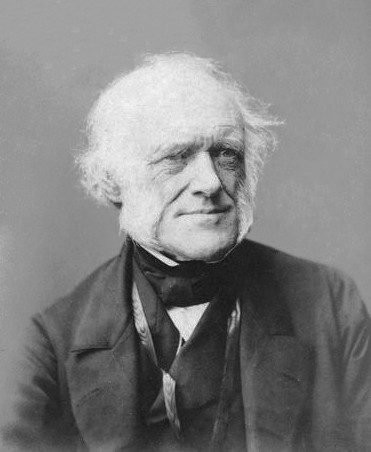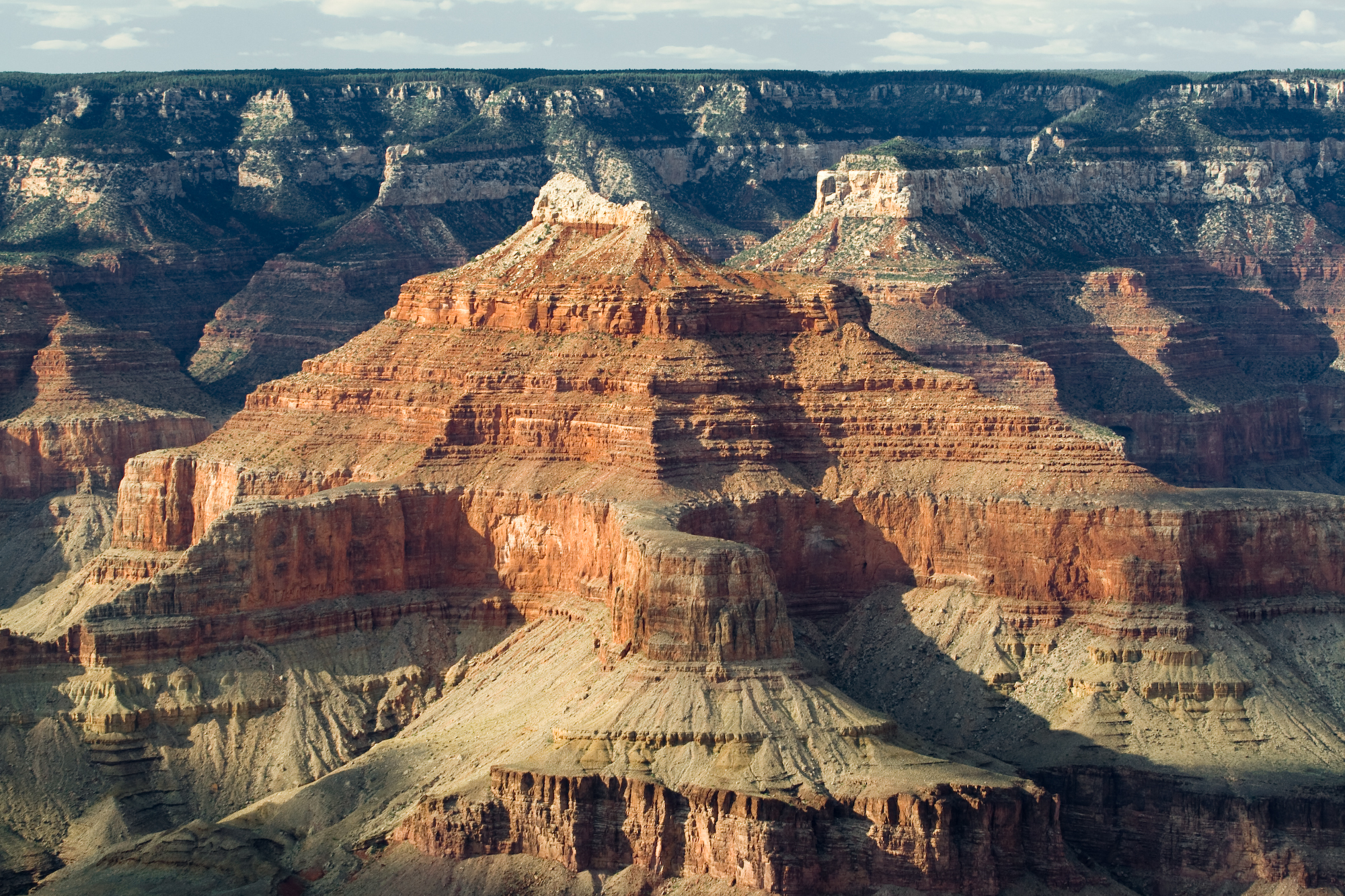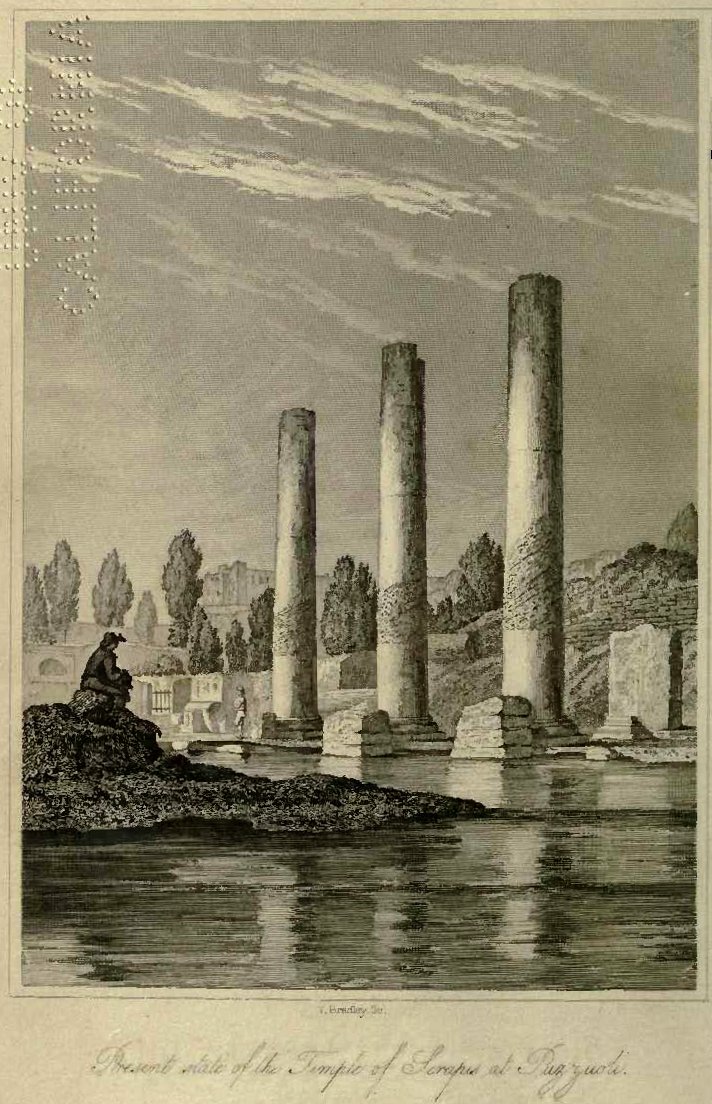|
Lyell Butte
Lyell Butte is a elevation summit located in the Grand Canyon, in Coconino County of northern Arizona, United States. It is situated east of Grand Canyon Village, immediately east of and below Shoshone Point, and 1.5 mile southeast of Newton Butte, which is the nearest higher neighbor. Topographic relief is significant as Lyell Butte rises above the Colorado River in 1.5 mile (2.4 km). Access is via the Tonto Trail which traverses the base of the peak. According to the Köppen climate classification system, Lyell Butte is located in a cold semi-arid climate zone, with precipitation runoff draining northeast to the Colorado River via Grapevine and Boulder Creeks. History Lyell Butte was named in 1906 after Sir Charles Lyell (1797–1875), eminent Scottish geologist best known as the author of ''Principles of Geology''. This feature's name was officially adopted in 1906 by the U.S. Board on Geographic Names. The first ascent of Lyell Butte was made January 24, 1970, by Alan Doty ... [...More Info...] [...Related Items...] OR: [Wikipedia] [Google] [Baidu] |
Newton Butte
Newton Butte, in the Grand Canyon, Arizona, United States is a prominence below the South Rim, northwest of Grandview Point, and north on a ridgeline from Shoshone Point which is one mile east of Yaki Point, East Rim Drive. Shoshone Point and Yaki are both on access roads from East Rim Drive, with Yaki being the more advantageous to different viewing directions. Newton Butte is , and located on a point/ridge, just south of Granite Gorge on the Colorado River. The point location of Newton Butte extends due north from an intermediate point on the South Rim, Shoshone Point, which at the end of the Newton Butte point ridgeline, also forms the west perimeter of the ''Lonetree Canyon'' drainage, into Granite Gorge. Just north of Newton Butte, 3/4 mi on the end of the point, is Pattie Butte, a lower elevation prominence, . Two hiking trails are closest to Newton Butte. Across Granite Gorge, views south can be made from the Clear Creek Trail, at lower elevations or as it climbs pa ... [...More Info...] [...Related Items...] OR: [Wikipedia] [Google] [Baidu] |
Tonto Trail
The Tonto Trail is a hiking trail on the South Rim of the Grand Canyon in Grand Canyon National Park, located in the U.S. state of Arizona. Access The Tonto Trail does not terminate at either rim of the Grand Canyon, but begins along the south bank of the Colorado River at Garnet Canyon (western end) and ends at Red Canyon (eastern end), also at the Colorado River. Through most of its 95-mile length, the trail runs along the Tonto Platform, the bench in the Grand Canyon that separates the inner gorge from the upper canyon. 95 miles (152.9 km): Garnet Canyon to Red Canyon Approximate mileages between key points on the Tonto Trail: 11.6 miles (18.7 km): Garnet Creek to Bass Canyon 35.7 miles (57.5 km): Bass Canyon to Hermit Creek 12 miles (19.3 km): Hermit Creek to Bright Angel Trail (Indian Garden) 4.5 miles (7.2 km): Bright Angel Trail to South Kaibab Trail 21.3 miles (34.3 km): South Kaibab Trail to Grandview Trail (Horseshoe Mesa) 9.9 miles (1 ... [...More Info...] [...Related Items...] OR: [Wikipedia] [Google] [Baidu] |
Tonto Group
The Tonto Group is a name for an assemblage of related sedimentary strata, collectively known by geologists as a ''Group'', that comprises the basal sequence Paleozoic strata exposed in the sides of the Grand Canyon. As currently defined, the Tonto groups consists of the Sixtymile Formation, Tapeats Sandstone, Bright Angel Shale (or Formation), Muav Limestone (or Formation), and Frenchman Mountain Dolostone. Historically, it included only the Tapeats Sandstone, Bright Angel Shale, and Muav Limestone.Karlstrom, K.E., Mohr, M.T., Schmitz, M.D., Sundberg, F.A., Rowland, S.M., Blakey, R., Foster, J.R., Crossey, L.J., Dehler, C.M. and Hagadorn, J.W., 2020. ''Redefining the Tonto Group of Grand Canyon and recalibrating the Cambrian time scale''. ''Geology'', 48(5), pp. 425–430.Connors, T.B., Tweet, J.S., and Santucci, V.L., 2020. ''Stratigraphy of Grand Canyon National Park''. In: Santucci, V.L., Tweet, J.S., ed., pp. 54–74, ''Grand Canyon National Park: Centennial Paleontologica ... [...More Info...] [...Related Items...] OR: [Wikipedia] [Google] [Baidu] |
Cambrian
The Cambrian Period ( ; sometimes symbolized C with bar, Ꞓ) was the first geological period of the Paleozoic Era, and of the Phanerozoic Eon. The Cambrian lasted 53.4 million years from the end of the preceding Ediacaran Period 538.8 million years ago (mya) to the beginning of the Ordovician Period mya. Its subdivisions, and its base, are somewhat in flux. The period was established as "Cambrian series" by Adam Sedgwick, who named it after Cambria, the Latin name for 'Cymru' (Wales), where Britain's Cambrian rocks are best exposed. Sedgwick identified the layer as part of his task, along with Roderick Murchison, to subdivide the large "Transition Series", although the two geologists disagreed for a while on the appropriate categorization. The Cambrian is unique in its unusually high proportion of sedimentary deposits, sites of exceptional preservation where "soft" parts of organisms are preserved as well as their more resistant shells. As a result, our understanding of the Ca ... [...More Info...] [...Related Items...] OR: [Wikipedia] [Google] [Baidu] |
Supai Group
The Supai Group is a slope-forming section of red bed deposits found in the Colorado Plateau. The group was laid down during the Pennsylvanian to Lower Permian. Cliff-forming interbeds of sandstone are noticeable throughout the group. The Supai Group is especially exposed throughout the Grand Canyon in northwest Arizona, as well as local regions of southwest Utah, such as the Virgin River valley region. It occurs in Arizona at Chino Point, Sycamore Canyon, and famously at Sedona as parts of Oak Creek Canyon. In the Sedona region, it is overlain by the Hermit Formation, and the colorful Schnebly Hill Formation. The Supai Group is coeval with the Hermosa Group of east and south Utah; the Hermosa Group extended southeastwards from Utah to Durango, extreme southwest Colorado, and adjacent to the Hermosa type section. The Supai Group was originally designated as the Supai Formation by N.H. Darton in 1910 for exposures at Supai, Arizona. It was first raised to group stratigrap ... [...More Info...] [...Related Items...] OR: [Wikipedia] [Google] [Baidu] |
Permian
The Permian ( ) is a geologic period and stratigraphic system which spans 47 million years from the end of the Carboniferous Period million years ago (Mya), to the beginning of the Triassic Period 251.9 Mya. It is the last period of the Paleozoic Era; the following Triassic Period belongs to the Mesozoic Era. The concept of the Permian was introduced in 1841 by geologist Sir Roderick Murchison, who named it after the region of Perm in Russia. The Permian witnessed the diversification of the two groups of amniotes, the synapsids and the sauropsids ( reptiles). The world at the time was dominated by the supercontinent Pangaea, which had formed due to the collision of Euramerica and Gondwana during the Carboniferous. Pangaea was surrounded by the superocean Panthalassa. The Carboniferous rainforest collapse left behind vast regions of desert within the continental interior. Amniotes, which could better cope with these drier conditions, rose to dominance in place of their am ... [...More Info...] [...Related Items...] OR: [Wikipedia] [Google] [Baidu] |
Pennsylvanian (geology)
The Pennsylvanian ( , also known as Upper Carboniferous or Late Carboniferous) is, in the International Commission on Stratigraphy, ICS geologic timescale, the younger of two period (geology), subperiods (or upper of two system (stratigraphy), subsystems) of the Carboniferous Period. It lasted from roughly . As with most other geochronology, geochronologic units, the stratum, rock beds that define the Pennsylvanian are well identified, but the exact date of the start and end are uncertain by a few hundred thousand years. The Pennsylvanian is named after the U.S. state of Pennsylvania, where the coal-productive beds of this age are widespread. The division between Pennsylvanian and Mississippian (geology), Mississippian comes from North American stratigraphy. In North America, where the early Carboniferous beds are primarily marine limestones, the Pennsylvanian was in the past treated as a full-fledged geologic period between the Mississippian and the Permian. In parts of Europe, ... [...More Info...] [...Related Items...] OR: [Wikipedia] [Google] [Baidu] |
Redwall Limestone
The Redwall Limestone is a resistant cliff-forming unit of Mississippian age that forms prominent, red-stained cliffs in the Grand Canyon, ranging in height from to . Lithology Redwall Limestone consists predominantly of light-olive-gray to light-gray, fine- to coarse-grained, thin- to thick-bedded, often cherty, limestone. Its lower part consists of brownish-gray, interbedded finely crystalline dolomite and fine- to coarse-grained limestone with layers of white chert lenses and yellowish-gray and brownish-gray, cliff-forming, thick-bedded, fine-grained dolomite. It is divided into Horseshoe Mesa Member, Mooney Falls Member, Thunder Springs Member, and Whitmore Wash Member.Chronic, H (1983) ''Roadside Geology of Arizona.'' The Mountaineers Books, Seattle, Washington. (softcover, ) Its origins date to the Mississippian age. Contacts The upper and lower contacts of the Redwall Limestone are both unconformities. Locally, the Redwall Limestone directly overlies the unconformity ... [...More Info...] [...Related Items...] OR: [Wikipedia] [Google] [Baidu] |
Mississippian (geology)
The Mississippian ( , also known as Lower Carboniferous or Early Carboniferous) is a subperiod in the geologic timescale or a subsystem of the geologic record. It is the earlier of two subperiods of the Carboniferous period lasting from roughly 358.9 to 323.2 million years ago. As with most other geochronologic units, the rock beds that define the Mississippian are well identified, but the exact start and end dates are uncertain by a few million years. The Mississippian is so named because rocks with this age are exposed in the Mississippi Valley. The Mississippian was a period of marine transgression in the Northern Hemisphere: the sea level was so high that only the Fennoscandian Shield and the Laurentian Shield were dry land. The cratons were surrounded by extensive delta systems and lagoons, and carbonate sedimentation on the surrounding continental platforms, covered by shallow seas. In North America, where the interval consists primarily of marine limestones, it is treate ... [...More Info...] [...Related Items...] OR: [Wikipedia] [Google] [Baidu] |
Sir Charles Lyell, 1st Bt
''Sir'' is a formal honorific address in English for men, derived from Sire in the High Middle Ages. Both are derived from the old French "Sieur" (Lord), brought to England by the French-speaking Normans, and which now exist in French only as part of "Monsieur", with the equivalent "My Lord" in English. Traditionally, as governed by law and custom, Sir is used for men titled as knights, often as members of orders of chivalry, as well as later applied to baronets and other offices. As the female equivalent for knighthood is damehood, the female equivalent term is typically Dame. The wife of a knight or baronet tends to be addressed as Lady, although a few exceptions and interchanges of these uses exist. Additionally, since the late modern period, Sir has been used as a respectful way to address a man of superior social status or military rank. Equivalent terms of address for women are Madam (shortened to Ma'am), in addition to social honorifics such as Mrs, Ms or Miss. Etymolo ... [...More Info...] [...Related Items...] OR: [Wikipedia] [Google] [Baidu] |
First Ascent
In mountaineering, a first ascent (abbreviated to FA in guide books) is the first successful, documented attainment of the top of a mountain or the first to follow a particular climbing route. First mountain ascents are notable because they entail genuine exploration, with greater risks, challenges and recognition than climbing a route pioneered by others. The person who performs the first ascent is called the first ascensionist. In free climbing, a first ascent (or first free ascent, abbreviated FFA) of a climbing route is the first successful, documented climb of a route without using equipment such as anchors or ropes for aiding progression or resting. History The details of the first ascents of even many prominent mountains are scanty or unknown; sometimes the only evidence of prior summiting is a cairn, artifacts, or inscriptions at the top. Today, first ascents are generally carefully recorded and usually mentioned in guidebooks. The term is also used when referrin ... [...More Info...] [...Related Items...] OR: [Wikipedia] [Google] [Baidu] |
Principles Of Geology
''Principles of Geology: Being an Attempt to Explain the Former Changes of the Earth's Surface, by Reference to Causes Now in Operation'' is a book by the Scottish geologist Charles Lyell that was first published in 3 volumes from 1830–1833. Lyell used the theory of uniformitarianism to describe how the Earth's surface was changing over time. This theory was in direct contrast to the geological theory of catastrophism. Many individuals believed in catastrophism to allow room for religious beliefs. For example, the Genesis flood narrative could be described as a real geological event as catastrophism describes the changing of the Earth surface as one-time, violent events. Lyell challenged the believers of the catastrophic theory by studying Mount Etna in Sicily and describing the changes from one stratum to another and the fossil records within the rocks to prove that slow, gradual changes were the cause of the ever-changing Earth's surface. Lyell used geological proof to determi ... [...More Info...] [...Related Items...] OR: [Wikipedia] [Google] [Baidu] |






_-_11.jpg)
